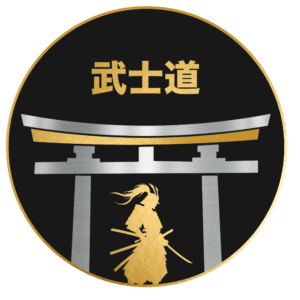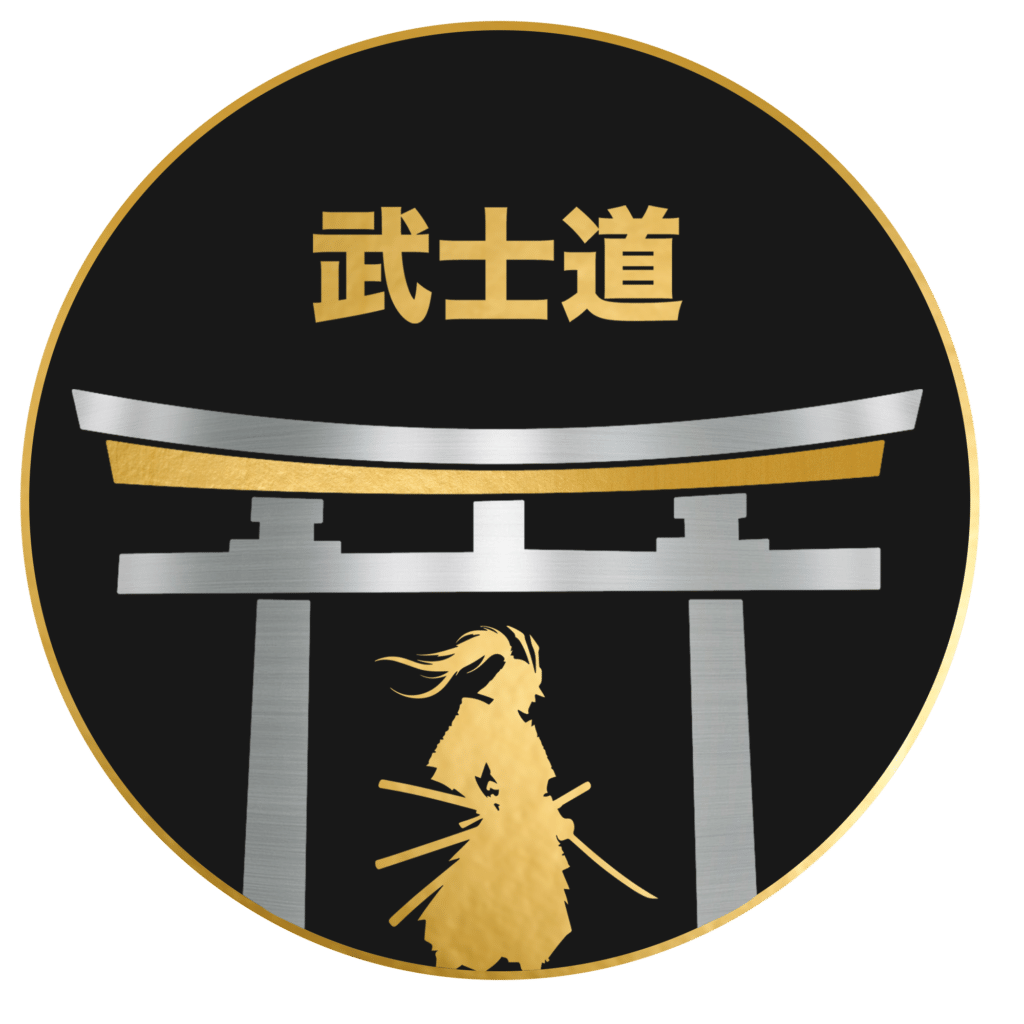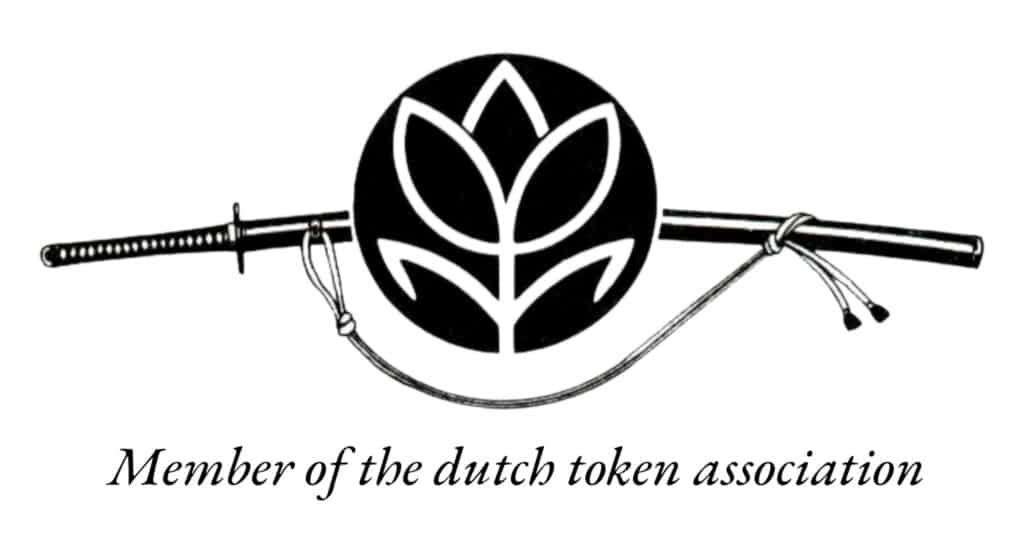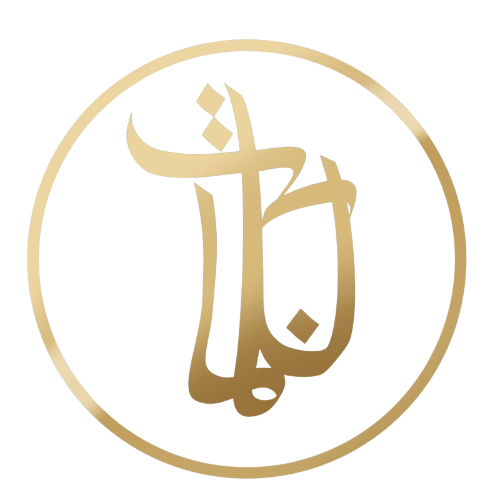Useful terms
Japanese Sword Terms
We have compiled a list of various Japanese sword terms. On this page, we will discuss various terms and explain their meanings.
Aikuchi:
Small tanto without a tsuba. Often worn concealed under clothing, especially by women.
Ashi:
Narrow channels of softer steel extending from the ji to the hamon. Literally means “legs.” It is claimed that this irregularity in the hamon prevents large pieces from breaking off the cutting edge.
Bo’hi:
Also called “Hi.” It is a groove or hole at the top of the blade. Many people refer to it as the “blood groove,” but this is incorrect. The grooves are there to limit the weight of the blade (bringing the balance closer to the tsuba), and when executed correctly, they produce a “woosh” sound (trained in iaido, among other practices).
Boshi:
The visible hardening line (hamon) on the kissaki.
Choji:
Hamon in the shape of a mushroom or cloverleaf.
Chokuto:
Straight sword.
Gunome:
Hamon in the shape of a half circle.
Ha:
Cutting edge.
Habaki:
Metal collar to prevent the sword from touching the inside of the saya (scabbard).
Habuchi:
The line defining the angle of the hamon.
Hada:
Traces of forging.
Hamachi:
Notch marking the beginning of the sharp edge.
Hamon:
The pattern of the hardened martensite (type of steel) on the side of the blade, including the transition zone from habuchi to softer pearlite (unhardened steel).
Hi:
See Bo’hi.
Horimono:
Engraving on the blade.
Inazuma:
Literally means “locked lightning.” Refers to streaks of hardened steel in a vertical zigzag pattern in the transition zone of the habuchi.
Ito:
Braided wrapping that secures the tsuka to the nakago.
Ji:
Blade surface above the hamon.
Jihada:
Pattern on the surface of the blade or Ji.
Katana:
Curved blade. The katana replaced the tachi in the middle of the Muromachi period and remained in use until the end of the Edo period. Generally, they were 60 cm (2 shaku) or longer. Typically, it was worn in combination with a shorter variant, the wakizashi, during the Edo period, collectively referred to as Daisho.
Ken:
Straight sword made in early Japan. Replaced by the tachi in the Heian period.
Kinsuji:
Literally “Golden lines.” Refers to horizontal streaks of hardened steel in the habuchi.
Kissaki:
Point of a sword.
Kojiri:
Cap at the end of the saya (scabbard).
Ko Nie:
Small bits of hardened steel, martensite crystals, in the habuchi. Their size is between nie and nioi.
Koshirae:
All parts of the sword, including the saya, tsuba, tsuka, menuki, habaki, kashira, sageo, and other components.
Kurikata:
Knot used to tie the sageo around the saya.
Mei ura:
Signature of the swordsmith. Placed on the nakago.
Mei omote:
Date when the sword was made.
Mekugi:
Bamboo pin securing the tsuka to the nakago.
Mekugi ana:
Hole in the nakago for a bamboo pin (mekugi) to secure the nakago in the tsuka.
Menuki:
Ornamentation placed over the mekugi and holds the tsuka on the tang.
Mune:
Back of the blade.
Mune-machi:
End of the mune, where the nakago begins.
Nagasa:
Length of the blade.
Nakago:
Continuation of the blade into the handle (tang).
Nie:
Small bits of hardened steel, martensite crystals, in the habuchi visible to the naked eye.
Nihonto:
Collective term for Japanese swords. Includes ken, naginata, yari, tachi, katana, wakizashi, and tanto.
Nioi:
Small bits of hardened steel, martensite, or pearlite crystals in the habuchi, too small to see with the naked eye. They appear as “misty” areas.
Notare:
Irregular undulations in the hamon.
Sageo:
Cord used to attach the saya to the belt during wear.
Samegawa:
Stingray or sharkskin covering the handle.
Saya:
Scabbard.
Shinogi:
Ridge determining the angle of the blade.
Shinogiji:
Blade above the Shinogi.
Shirasaya:
Wooden stand (“resting place”) where swords are stored.
Sori:
The degree of curvature of the blade.
Sugata:
Shape of the sword.
Suguha:
Straight hamon.
Suriage:
A shortened nakago, usually resulting from converting a tachi into a katana.
Tachi:
Long sword used by early samurai on horseback. From the Heian to the early Muromachi period. Tachi typically have a significant curve (sori) and are usually between 65 and 70 cm long.
Tanto:
Japanese variant of a dagger.
Togi:
The polishing of the blade. It goes beyond sharpening, revealing the characteristics of the blade.
Toran:
Hamon in the form of a wave.
Tsuba:
Separates the handle from the blade and prevents the sword from slipping through the hand.
Tsuka:
Handle.
Ura:
Back.
Wakizashi:
Short sword normally worn in combination with the longer katana. The cutting edge is between 30 and 60 cm long. Together with the katana, it forms a daisho.
Yakiba:
Cutting edge.
Yasuri mei:
The file marks that mark the nakago.



